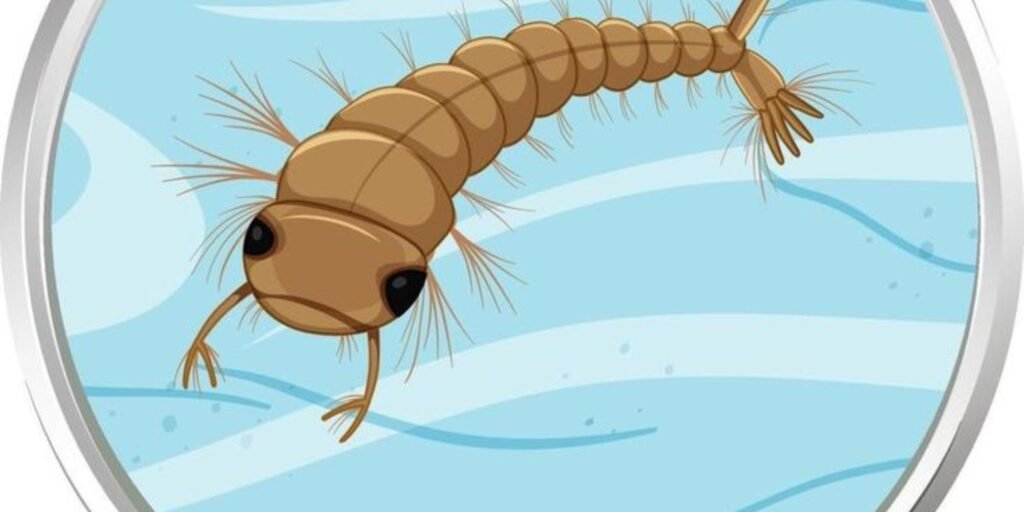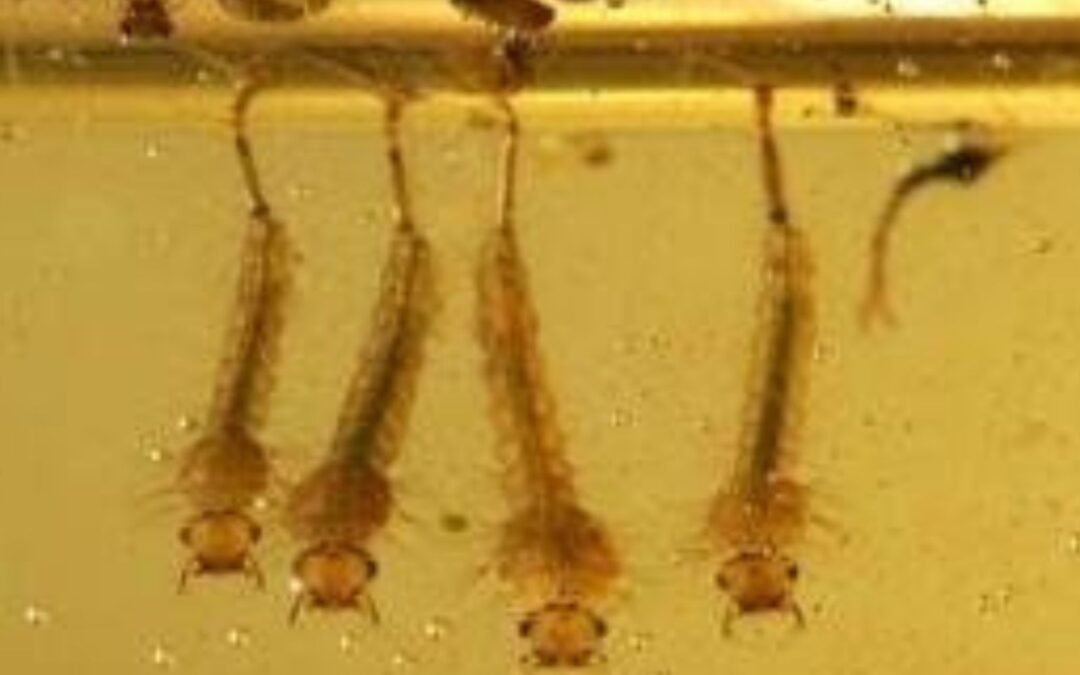Introduction
Mosquitoes are more than just an annoyance—they are a significant public health concern, spreading dangerous diseases like malaria, dengue, Zika virus, and West Nile virus. While there are many ways to prevent mosquito bites and manage adult mosquito populations, one of the most effective methods for reducing their numbers is to eliminate them at the larval stage. Learning how to kill mosquito larvae before they mature into adult mosquitoes is a crucial step in controlling their population.
By targeting the larvae and interrupting their life cycle, you can drastically reduce their presence in your environment and prevent the spread of these harmful diseases.
In this guide, we will provide a detailed overview of how to kill mosquito larvae, how to identify them, the habitats where they thrive, and the most effective techniques for eliminating them. We will also discuss preventive measures to ensure that you can keep your surroundings free of mosquito breeding grounds year-round
Understanding Mosquito Larvae

Before we delve into how to kill mosquito larvae, it’s essential to understand what mosquito larvae are and where they live. Mosquito larvae are the aquatic immature stages of mosquitoes, which hatch from eggs laid in or near standing water. These larvae are usually found in stagnant water sources, such as ponds, puddles, ditches, birdbaths, and even small containers like flowerpots or clogged gutters.
Mosquito larvae are easily identifiable as tiny, wriggling creatures that float just beneath the water’s surface. They have a segmented body and a distinct siphon-like structure at the end of their bodies, which they use to breathe while suspended in the water.
How to Identify Mosquito Larvae
Recognizing mosquito larvae is the first step in how to kill mosquito larvae. These larvae are typically small, ranging from 1 to 2 millimeters long when they first hatch, but they can grow larger as they develop. They are usually found in the water, wriggling near the surface. Here are some key features to help identify mosquito larvae:
- Shape: Mosquito larvae are cylindrical and have a segmented body.
- Siphon: At the rear end of the body, you’ll find a small tube-like structure that the larvae use to breathe.
- Movement: They tend to wriggle and dart in the water, often floating just below the surface.
- Color: Mosquito larvae can be transparent to pale white, with a light brown or greenish tint as they grow.
What Are Mosquito Larvae, and Why Target Them?
Mosquito larvae are the immature stage of mosquitoes that hatch from eggs laid in standing water. They cannot fly and are entirely dependent on water for survival. Because they are concentrated in confined spaces, larvae are much easier to control and eliminate than adult mosquitoes, which can spread far and wide.
Focusing on larvae reduces the likelihood of mosquitoes maturing into adults, thereby lowering the chances of bites and disease transmission.
Common Habitats of Mosquito Larvae
To effectively eliminate mosquito larvae, you must first locate their breeding grounds. Mosquitoes commonly lay their eggs in stagnant or slow-moving water sources. Here are the most frequent types of habitats to check for mosquito larvae:
- Outdoor Containers: Buckets, flower pots, tyres, and other containers that can collect water.
- Ponds and Pools: Small ponds, water fountains, and unused swimming pools.
- Clogged Gutters: Gutters not draining properly can hold enough water to become breeding grounds.
- Natural Sources: Puddles, tree holes, and marshy areas are ideal for mosquitoes.
- Troughs and Birdbaths: Items that need to be emptied or cleaned regularly can harbour larvae.
How to Identify Mosquito Larvae
Mosquito larvae are usually visible in water. They are small (approximately ¼ to ½ inch long) and have distinctive features such as a worm-like appearance and a jerky, zigzag swimming motion. Most larvae need about 7 to 10 days to mature, so quick action is key to preventing their development.
Methods to Kill Mosquito Larvae
Several effective methods exist to kill mosquito larvae. These range from natural solutions to chemical interventions, depending on the situation and the water source.
Drain Standing Water

The simplest and most effective solution is to eliminate the water itself. By emptying containers of water, you remove the habitat needed for larvae to survive. If draining water is not feasible, proceed to the other methods outlined below.
- Introduce Larvae-Eating Predators
Certain organisms naturally prey on mosquito larvae, helping to control their population without chemicals.
- Fish: Fish species such as guppies, goldfish, and mosquito fish (Gambusia) feed on mosquito larvae and are an excellent option for ponds or decorative pools.
- Dragonfly Nymphs: Dragonflies in their larval stage are known to be voracious eaters of mosquito larvae.
- Biological Control Agents
Biological methods target mosquito larvae using bacteria or natural agents that are harmless to other organisms.
- Bacillus thuringiensis israelensis (Bti): Bti is a naturally occurring bacterium that is toxic to mosquito larvae but safe for humans, pets, and plants. It is available in various forms, such as granules and “mosquito dunks,” which you drop into standing water.
- Neem Oil: Neem oil disrupts the growth cycle of mosquito larvae, preventing them from maturing. Add a few drops of neem oil to stagnant water sources.
- Chemical Larvicides
Chemical larvicides may be necessary for larger water bodies or severe infestations. Always follow safety guidelines when using chemical options.
- Methoprene: This insect growth regulator disrupts the larval stage, preventing maturation into adult mosquitoes.
- Temephos: This larvicide is commonly used in public health programs for large-scale mosquito control.
- Oil-Based Treatments
Adding a thin layer of oil, such as vegetable or mineral oil, to the surface of stagnant water can suffocate mosquito larvae by blocking their access to oxygen. Use this method judiciously and avoid contaminating natural or drinking water sources.
- Heat Treatment
Boiling small amounts of stagnant water can instantly kill larvae. This method is practical for confined spaces like flower pots and outdoor containers.
Preventing Mosquito Larvae in the Future
Once larvae have been eliminated, the next step is to ensure they don’t return. Preventive measures play a critical role in maintaining a mosquito-free environment.
Remove or Cover Water Sources
- Empty and clean outdoor containers at least once a week.
- Cover water storage containers with tight-fitting lids to prevent mosquitoes from laying eggs.
- Replace the water in birdbaths and pet bowls regularly.
Improve Drainage
- Regularly clean gutters and drains to ensure proper water flow.
- Level uneven surfaces in your yard to prevent water accumulation after rain.
Use Mosquito Netting or Mesh
Install mesh screens over water features such as ponds and fountains to prevent mosquitoes from accessing the water’s surface.
Maintain Landscaping
Keep shrubs and grass trimmed to reduce shaded, humid areas where mosquitoes might linger when not breeding.
How to Monitor and Evaluate Success
After implementing these methods, it’s essential to monitor your environment regularly. Check known water sources for any remaining signs of larvae. If you spot recurring infestations, reassess your chosen methods and consider professional pest control services.
A Healthier Environment Starts with Prevention
Targeting mosquito larvae is one of the most effective ways to combat mosquito infestations and protect your home and community from the diseases they spread. Following the methods outlined in this guide, you can break the mosquito life cycle and reclaim your outdoor spaces.
Start by inspecting your property today, and take swift action to eliminate any standing water or existing larvae. With persistence, you can significantly reduce mosquito populations and enjoy a safer, more comfortable environment.

